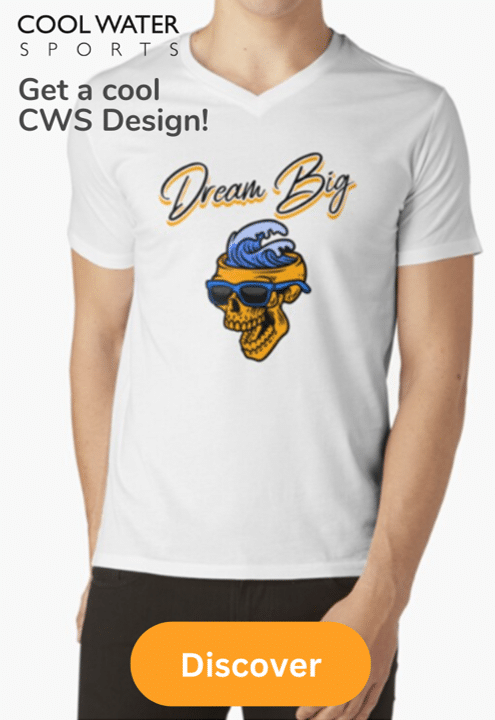Having the right gear can make all the difference in bodyboarding. Every piece of equipment plays a crucial role in your overall experience, from the board to the fins, even the leash.
But what about the right Bodyboard apparel?
Whether you’re a seasoned pro or just starting, it’s essential to understand bodyboard apparel’s key features and benefits. From wetsuits to rashguards, this gear protects you from the elements and keeps you comfortable while you ride the waves.
So, let’s dive right in and discover what you need to know about bodyboard apparel!
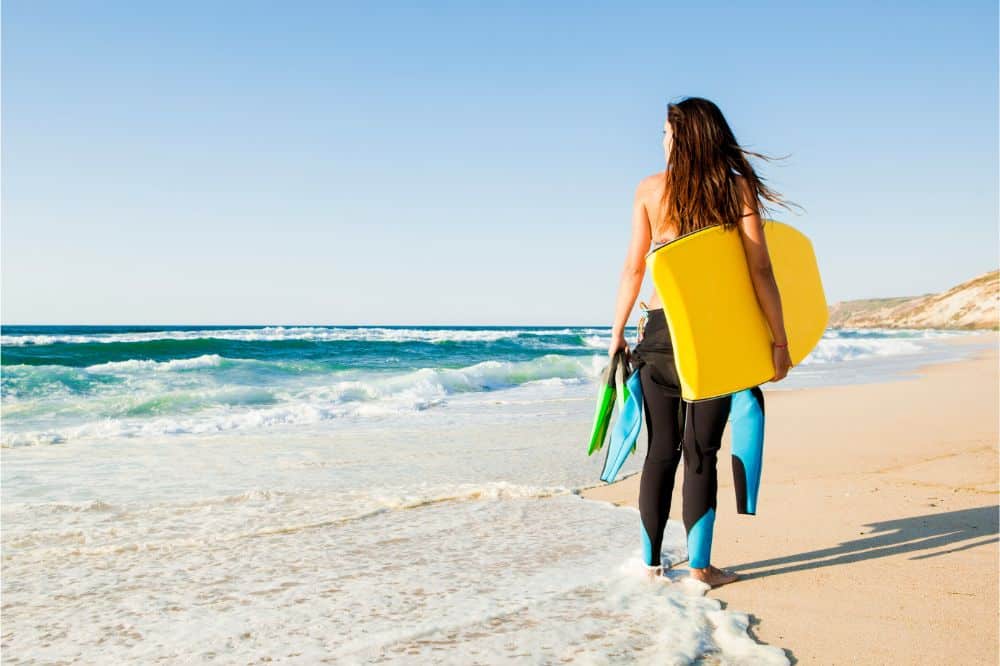
Importance of proper apparel for bodyboarding
Bodyboarding is an exciting and enjoyable water sport where you glide on a short, floaty board called a bodyboard in the ocean. Whether you’re just starting or have lots of experience, bodyboarding is an excellent activity for surfers of all levels. It’s easier to learn and requires less skill and physical ability than traditional surfing. To ride the waves, lie face down on the board and use your hands and fins to steer and have fun!
However, the proper clothing can make a huge difference on the level of fun you’ll have. Wearing the right bodyboarding apparel helps keep you warm, protected, and comfortable, and promotes good hygiene.
Let’s take a look at how!
It helps to keep the rider warm and protected in the water.
Wearing a wetsuit keeps you warm and helps to prevent hypothermia, which is highly important when you ride in colder waters. Rash guards and other water-resistant clothing protect your skin from harmful sunburn and damage and should be used even in warm weather and water.
Accessories such as fins and leashes are essential for controlling your board and staying safe in the water.
The right bodyboard apparel enhances the overall bodyboarding experience.
The proper clothing and accessories can improve your mobility and flexibility, so you can perform better, longer and attempt more challenging maneuvers.
A good-quality wetsuit, for example, can provide extra buoyancy and support, making it easier to catch and ride waves. Or, a well-fitting rash guard can keep you comfortable by preventing chafing and irritation so that you can stay focused on your performance.
Proper apparel is also important for comfort and hygiene.
When you spend excessive time in the ocean, your skin can sometimes become irritated or even infected. Wearing the right gear, like wetsuits, rash guards, or board shorts, can help keep these issues at bay and ensure you stay comfortable and healthy while enjoying the water.
To wrap things up, having the right gear while bodyboarding is essential. Investing in quality bodyboarding gear is integral to being a responsible and successful rider. Your gear keeps you safe, helps you perform better, and ensures you stay comfortable and clean.
The most important pieces of Bodyboard Apparel
Wetsuits
1. Materials used
Wetsuits are made of various materials to keep you warm and protected while in the water. The most common material is neoprene, a flexible and insulating synthetic rubber resistant to damage.
Brands often use other materials like nylon, lycra, and spandex in the suit’s lining and outer layer to add durability, comfort, and flexibility.
Some wetsuits even have unique materials like titanium and carbon fiber to provide extra insulation and warmth.
2. Different styles and fits
Wetsuits come in various styles and fit to accommodate different body types, water temperatures, and riding styles.
The most common styles include shorties, spring suits, full suits, and steamer suits.
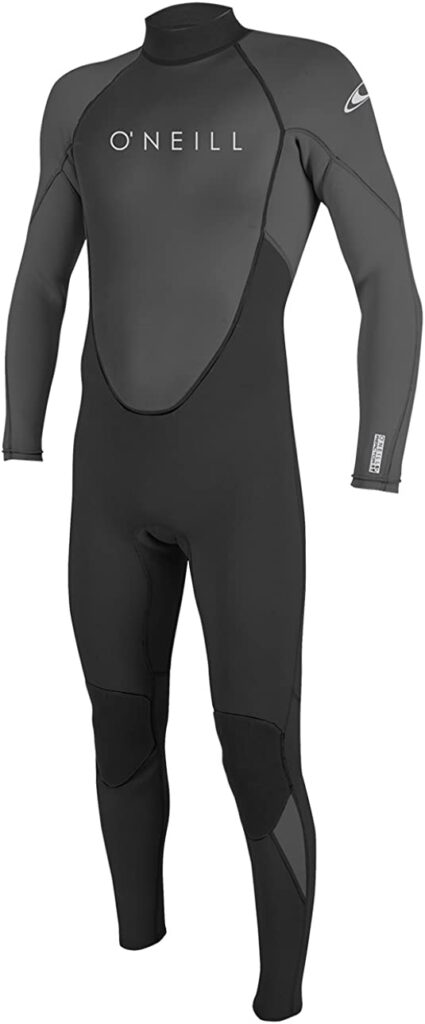
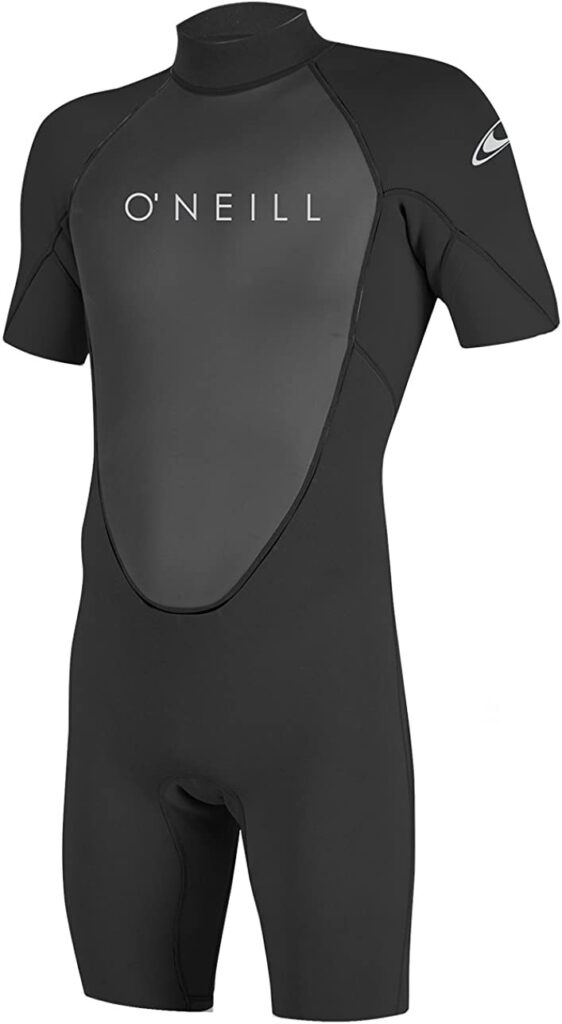
Shorties are the shortest type of wetsuit and are typically worn in warmer water temperatures. Spring suits have short sleeves and legs, while full-body suits cover the entire body.
Steamer suits have the most coverage and keep you warm. Regarding the type of fit, wetsuits come in various forms, such as regular, relaxed, and performance. ‘Regular fit’ wetsuits are for normal, everyday use, ‘relaxed fit’ for more comfort while bodyboarding, and ‘performance fit’ is for maximum flexibility while on the water.
3. When to choose a wetsuit over a rashguard
Choosing between a wetsuit and a rashguard can depend on several factors, including water temperature, personal preference, and the intensity of the activity. Typically, wetsuits are worn in cold water temperatures, as they provide insulation and help prevent hypothermia. These also offer protection from sunlight and the elements.
Note that wetsuits provide more buoyancy than rash guards; this can help the bodyboarder to float better on the water’s surface, which can be an essential factor when maneuvering the board. Wearing a rashguard is a good idea whenever it’s warm outside to keep your skin safe from sunburn and discomfort.
4. How to choose the right wetsuit
Fit is an important factor to consider when choosing a wetsuit.
It’s important that the wetsuit fits snugly but not too tightly, allowing you to move freely without feeling restricted. You may want to consider a custom-fit wetsuit, as they are designed to fit your specific body shape and size. In addition, the material of the wetsuit is also important.
Look for wetsuits made of high-quality neoprene, which tends to be more durable and flexible than other materials. Make sure the seams are sealed and reinforced to prevent water from seeping in. Furthermore, you should also consider the style of the wetsuit, as bodyboarding wetsuits come in several styles such as full suits, spring suits, and shorties. The rule to apply is simple: the colder the water in which you ride will be, the longer the wetsuit and the thicker the neoprene should be.
Rashguards
1. Materials used
If the water temperature is warm so that you don’t need a wetsuit, you nevertheless should wear a Rashguard!
This swim shirt protects your skin from the sun, chafing, and even jellyfish stings. Rashguards are made from various materials depending on the manufacturer.
Polyester and spandex are the two main materials that rashguards are typically made from. They can also include mixed materials like lycra, nylon, or mesh. Special agents are sometimes applied to keep you fresh and to prevent bacteria growth.
2. Different styles and fits
Rash guards are available in various designs to suit body shapes, water temperatures, and water activities. Some popular variations include long-sleeve, short-sleeve, and no sleeves at all. Longer sleeves are for protection from the sun, whereas no sleeves offer the most comfort during warmer temperatures.
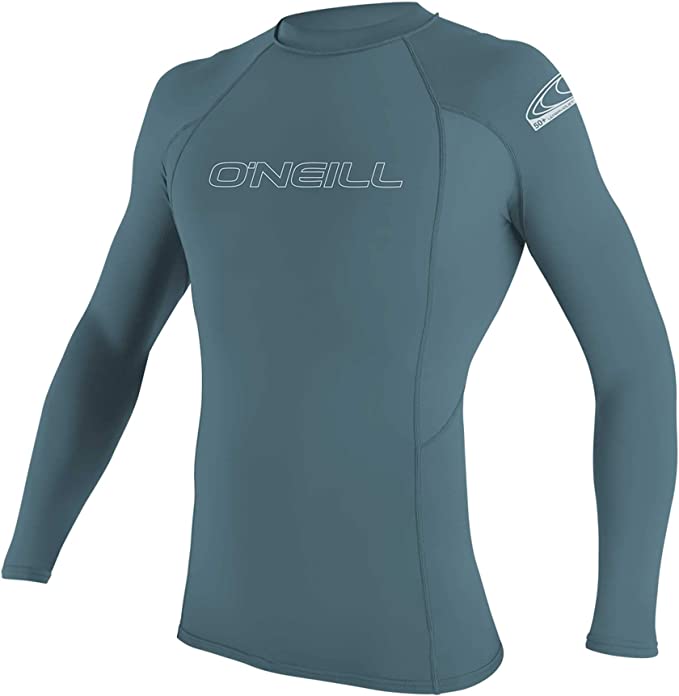
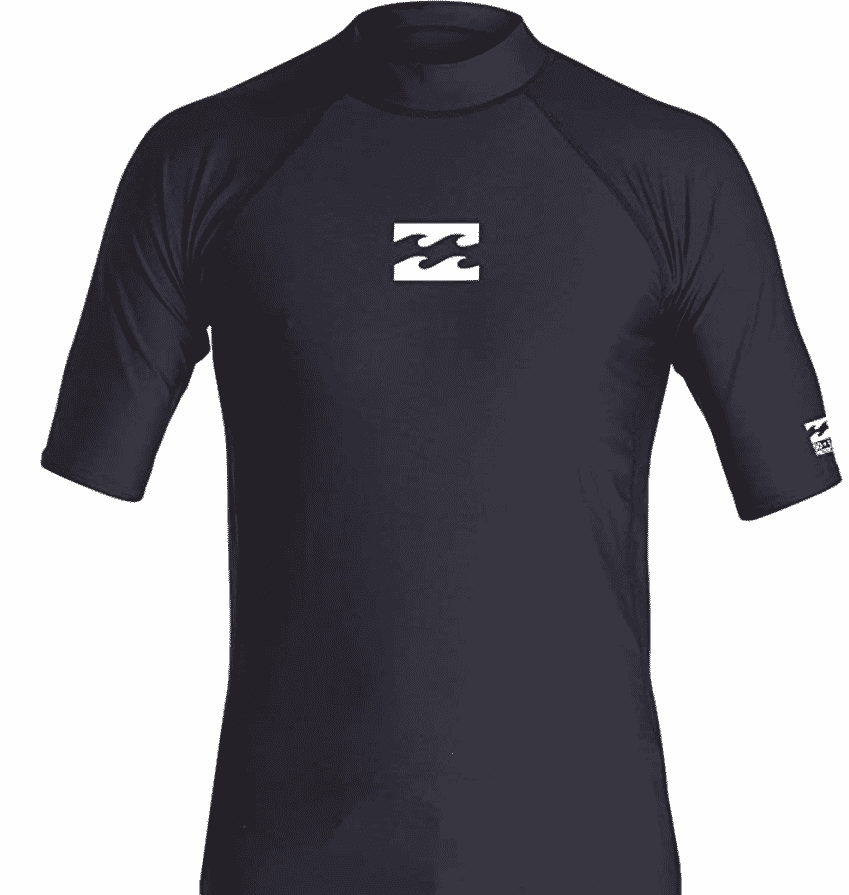
Regarding fit, rashguards come in different cuts, such as regular, relaxed, and performance. Regular fit rash guards are designed for everyday use, comfortable fit for more comfort, and performance suitable for maximum flexibility. Some rashguards also come in different compression levels, which can affect the support and muscle compression level they provide.
3. How to choose the right rashguard
When selecting a rashguard, it is important to consider a few factors. First and foremost, it is important to select a rashguard that is the appropriate size. A rashguard that is too small will be uncomfortable and may cause chafing, while a rashguard that is too large may not stay in place.
It is also important to select a rashguard that is made of a high-quality material that is designed to be breathable and quick-drying. Additionally, you should consider the style of rashguard that you prefer; some rashguards offer more coverage than others.
Also, it is important to consider the color of the rashguard; some colors offer better sun protection than others. By taking all of these factors into consideration, you can make sure that you select the right rashguard for your needs.
Bodyboard Leash
First of all, one needs to understand why it is important to use a bodyboard leash independently on the wave size you’re boarding:
- Safety: When you use a leash , you can’t be eparated from your board even in the event of a wipeout or strong current. Remember that especially when you far out from shore, the board is the only swimming aid you have.
- Respect for other surfers: Bodyboarding without a leash can be dangerous for other surfers around you, as your board could hit other surfers or swimmers if you lose control of it. A leash helps to keep your board close to you and minimize the risk of injury to yourself and others.
1. Materials used
Leashes are typically made of the three following materials.
Urethane or thermoplastic polyurethane (TPU) is a durable, flexible, and water-resistant material often used to coat the leash whereas the cord itself is made of nylon, which is strong and durable; neoprene is quick-drying and comfortable to wear and is therefore often used for the cuffs. That said, don’t be surprised if you find all three of these materials.
The best material combination for bodyboard leashes is a combination of urethane and nylon. The urethane-coated nylon cord is popular among bodyboarders as it balances strength, flexibility, and durability. The urethane coating helps to protect the cable from the elements and increases its lifespan. Neoprene is a solid option for the cuffs, as it quick-drying, comfortable and as it’s resistant to UV rays and other forms of damage.
2. Different styles and types
Bodyboard leashes come in different styles and fit to accommodate every riding style and preference. Let’s go over some of the options you’ll find while shopping around.
Coiled vs straight leashes
The most common styles include coiled and straight leashes. Coiled leashes are designed to reduce drag and tangling, while straight leashes directly connect you to the board.
We clearly prefer coiled leashes for Bodyboarding.
Wrist vs upper arm leashes
Wrist leashes are worn around the rider’s wrist and are typically shorter. In contrast, upper arm leashes are worn around the rider’s upper arm and must be longer to reach the board. This extra length allows for more freedom of movement and control but also increases the chances of getting caught up in the leash in the case of an emergency.
Here, our personal preference are the more common wrist leashes.
With or without a quick-release system
Thankfully some leashes come with a quick-release system that allows the rider to detach the leash from the board in an emergency. Regarding options, bodyboard leashes come in different sizes, usually measured by cord length, to accommodate diverse body types and riding styles.
Other features
A very practical feature some higher quality leashes offer is a so-called double swivel system. A double swivel system allows for a greater range of motion, reduces annoying tangling of the leash and also reduces the wear and tear on the attachment points of the leash.
3. Which type of leash do most bodyboarders use and why
The most commonly used type of leash for bodyboarding is a coiled wrist leash. They are worn around the rider’s wrist and are typically shorter. Wrist leashes offer more control and less drag while riding and are easier to release in an emergency.
They are also less cumbersome compared to upper arm leashes. Additionally, wrist leashes are more comfortable and less restrictive than upper arm leashes, allowing for more flexibility and freedom. They’re also just more convenient for everyday use.
However, upper arm leashes are also used by some riders, especially in large waves or for more advanced riders, as they provide more freedom of movement and less drag but also increase the chances of getting caught up in the leash in case of an emergency.
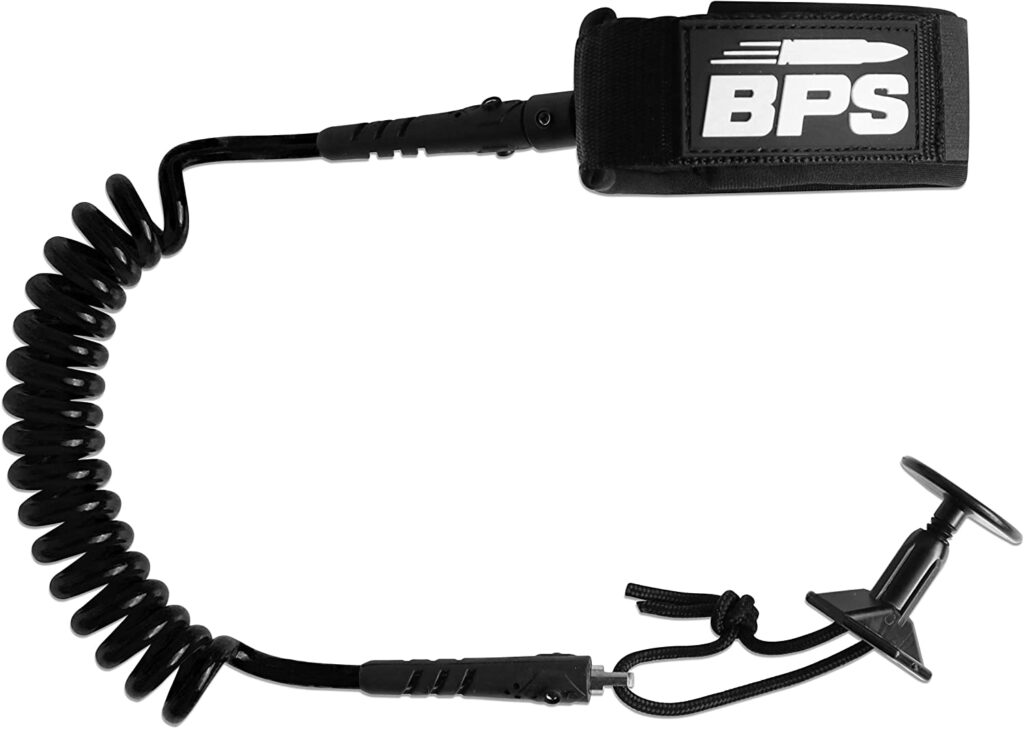
4. How to choose the right length of your bodyboard leash?
Determining the right length of a bodyboard leash is vital for safety and comfort while riding. The general rule of thumb is to choose a leash about the same length as the bodyboard. This will provide enough slack for the rider to move freely but not so much that the board becomes detached from the rider. You can also determine the proper length of your leash by measuring from the board’s tail to your ankle. Take that number and add a few extra inches for safety!
When selecting a leash, you should think about the kind of waves you’ll be riding and what you’re comfortable with. Longer leashes can give you more space to move around if you enjoy the thrill of big waves. However, if you prefer more control on smaller waves, a shorter leash might be the best for you.
5. Why do certain leashes come with a quick-release system?
Some bodyboard leashes have an emergency quick-release system to allow the rider to quickly detach the leash from the board in an emergency, such as getting caught in a strong current or a wave, or if the rider needs to free themselves from the leash in case of entanglement. Quick-release systems can be a pin, a clip, or a buckle, located at the cuff or the rail saver of the leash. This system can prevent injury or even save a life in certain situations.
Fins
1. Why use bodyboard Fins?
Fins, also known as swimfins, are used for bodyboarding to increase propulsion and maneuverability in the water. They are worn on the feet and are particularly useful for generating speed and maintaining control in larger waves. Swimfins improve the rider’s ability to turn when riding a wave. When experienced riders want to increase their performance in the water to the next level, they often use fins in competitive bodyboarding.
2. Materials used
Bodyboard fins are typically made from rubber, plastic, and fiberglass. Rubber fins are soft and flexible, which provides added comfort and control. Still, they may wear out faster than other materials. Plastic fins are more rigid and durable but they are not as comfortable as rubber fins. Fiberglass fins are stiffer and offer more power and speed, but they may be more challenging to control.
The material or combination typically best suited for bodyboard fins is a combination of rubber and plastic. The rubber gives them the flexibility and comfort needed, while the plastic enhances the durability and power. Combining the two materials therefore offers the balance of comfort, durability, and performance you need for bodyboarding. Rubber and plastic fins are also lightweight and relatively inexpensive.
Additionally, some fins are made with a combination of rubber, plastic, and fiberglass to further improve the power you can generate compared to the rubber / plastic fins. This is definitely an advantage when riding larger waves, just be aware that they may be more challenging to control. Ultimately, the best material combination for bodyboard fins depends on the rider’s preferences, skill level, and wave conditions.
As a consequence: If you’re just starting with bodyboarding, the best fins for you to choose would be those that are made from a mixture of plastic and rubber. This combination gives you the perfect balance of comfort and durability, making it perfect for the beginning bodyboarder. Rubber fins are especially great due to their softness and flexibility, which can be helpful for those who’re not used to fins and how they feel. If you want to learn more about the different models of bodyboard fins and how to find the right one for you, check out this detailed selection of some of the best fins for bodyboarding!

3. How to choose the right fins
Firstly, the size of the fins should be appropriate for your skill level and the type of surfboard you are using. If you are a beginner, you should look for fins that are lighter and have a smaller surface area. For more experienced surfers, fins with a higher surface area and more weight can provide more stability and control.
Secondly, you should consider the material used to create the fins. Some materials are more durable and provide better performance than others.
Finally, different shapes will provide different levels of control and stability, so you should select the fin shape that best suits your surfing style.
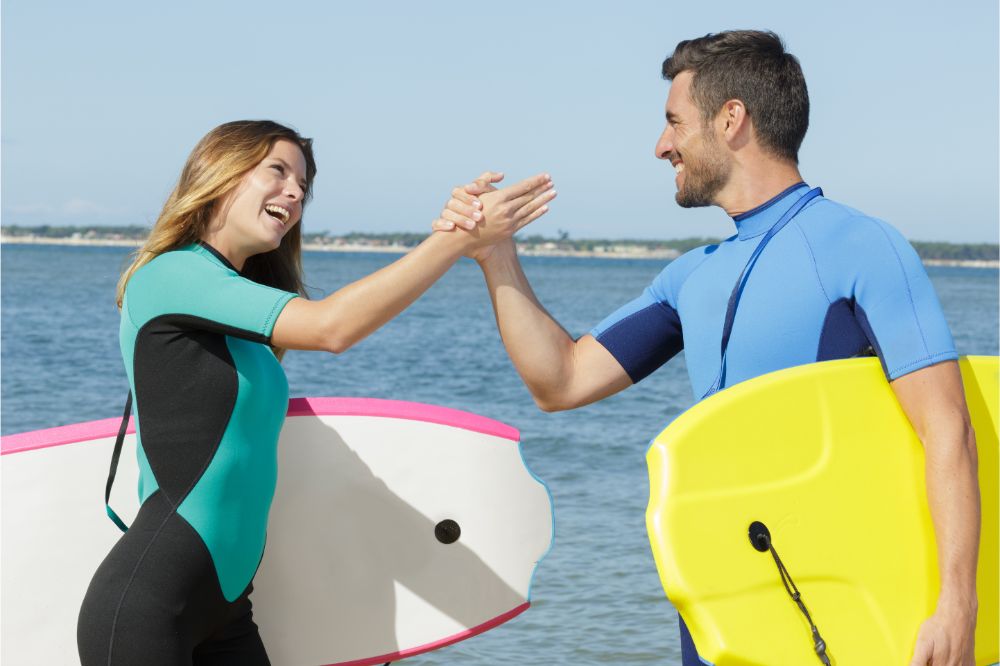
Popular Brands in Bodyboard Apparel
Overview of popular brands
Morey Boogie: Morey Boogie is a well-known bodyboarding brand known for its high-quality bodyboards and accessories.
Body Glove: Body Glove is a popular brand from Californie that offers a wide range of bodyboarding apparel, including wetsuits, rash guards, leashes, and fins.
Rip Curl: Rip Curl is a well-known surf and bodyboarding brand that offers a variety of apparel, including wetsuits, rash guards, and leashes.
Manta: Manta is a popular brand that offers a wide range of bodyboarding apparel, including wetsuits, fins, and leashes.
XM: XM is a brand that offers a range of bodyboarding apparel, including wetsuits, fins, and leashes, and is known for its quality and durability.
These brands above are just a tiny sample of the manufacturers that make bodyboard gear. Many other brands not listed here make exceptional gear, so the final choice depends on your personal preference, budget, and experience.
And not to forget: As a Bodyboarder, you need some cool Bodyboard T-Shirts!
For that, you definitely need to check out our self-designed series!
Comparison of quality and pricing
Take a look at the following chart and decide for yourself which one of these brands fits in with your personal preferences. In most cases, the higher the quality of the gear, the more you will pay for it, but that rule doesn’t always apply. If you are not sure, look at our recommendations.
| Brand | Quality | Pricing |
| Morey Boogie | High | Mid to High |
| Body Glove | High | Mid |
| Rip Curl | High | Mid to High |
| Manta | High | Mid |
| XM | High | Mid to Low |
Personal recommendations
When you are out on the water, your main concern will be that your gear and apparel will not let you down. To be sure this doesn’t happen, you need to acquire the best quality gear you can afford and that is definitely Morey Boogie.
Another brand that is also very popular when it comes to apparel and accessories is Rip Curl for its high-quality and reasonable pricing. However, note that all the other brands named here provide good quality gear, accessories, and apparel at decent prices.
Xm stands out when it comes to affordability and they provide good quality gear, accessories, and apparel, making them a good investment option.
Caring for Bodyboard Apparel
Wetsuits
Taking good care of your wetsuit can keep it performing well for longer. Here are some tips:
- After each use, rinse your wetsuit thoroughly with fresh water to remove salt, sand, and chlorine that could cause damage over time.
- Hang your wetsuit up to dry in a place with good airflow. Avoid exposing it to direct sunlight or putting it in the dryer, as this can make the neoprene less flexible.
- Store your wetsuit in a cool, dry place away from sunlight and dampness to prevent mildew and other damage.
- When washing your wetsuit, use a mild detergent made for wetsuits or neoprene. Stay away from harsh detergents or bleach that could harm the suit.
- Don’t wear sunblock or lotions under the wetsuit, as they can damage the neoprene and affect its performance.
- Be gentle when putting on and taking off your wetsuit, as pulling or stretching it can cause it to lose its shape and effectiveness.
- Following these steps can help keep your wetsuit in good shape and extend its life. Remember, the lifespan of a wetsuit depends on how often you use it and how well you take care of it.
Rashguards
Taking good care of your rashguard is also crucial. Here are some simple tips to follow:
- Rinse it with fresh water after each use to remove salt, sand, and chlorine that can damage the fabric over time.
- Wash it in the machine with a mild detergent but avoid using bleach or fabric softeners that can harm the fabric.
- Hang it to air dry in a well-ventilated place, away from direct sunlight or dryers that can shrink or change the shape of the fabric.
- Don’t iron or use heat on your rashguard, as it can damage the fabric.
- When not using it, store it in a cool and dry place, away from direct sunlight and damp areas that can cause mildew and harm the fabric.
Bodyboard Leash & Fins
The fins and leash do not need a lot of care. However, if you follow certain tips, you can reduce wear and tear a lot. So just do the following to make sure that you can use them for a long time:
- After usage, rinse them with fresh water. This prevents corrosion of the metal parts of the leash and reduces the degradation of the rubber and plastic of the fins.
- Dry them thoroughly. So after rinsing the with fresh water, make sure that the leash as well as the fins are completely dry before you store them.
- Store them in a dry and dark place. And especially, do not store them in a place where it gets really hot, like you car trunk.
Conclusion
It is in your own best interest to keep your safety in mind which means you should buy only the best gear. If you want to enjoy your bodyboard adventures, you need to equip yourself with the best gear and accessories. Also, keep your gear in the best condition possible so you are always safe and perform at your best. This way, you will have more fun!
Get yourself good quality gear and accessories like those from Morey Boogie, or if you have a tight budget, Xm is affordable.


